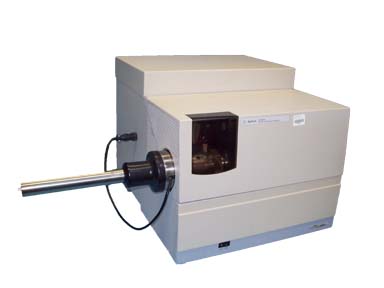|
Instrument Database:
Agilent Technologies Inc. - G2350A Atomic Emission Detector
| |
|

|
| |
|
| |
|
| Year of introduction |
2000 |
| Status |
historical ( out of sale ) |
| Company |
Agilent Technologies Inc.
|
| Categories |
Hyphenated Techniques: GC-AED
Spectrometer ( Atom. ): AES: MIP-AES
|
|
The first generation of AED, the HP 5921A Atomic Emission Detector was introduced in 1989. As a second-generation instrument, the G2350A AED has been substantially redesigned to broaden the scope of applications, enhance data handling and integration, and increase the analytical utility. Additionally, the AED is much easier to use and maintain, more reliable and smaller in size and weight. Features The Agilent Technologies AED allows the detection of virtually all elements (except helium) within any volatized compound at picogram-levels and with excellent selectivity. Capabilities of the AED - Selectively detect compounds containing any of about 25 preset elements including organo-metallic species and compounds labeled with stable isotopes.
- Enhance analytical confidence by confirming the presence of elements in compounds using atomic emission spectra. Obtain up to six element chroma tograms from a single injection.
- Automatically profile a sample by sequential detection of any number of elements in the sample.
- Perform quantitative analysis using almost constant response factors, it's possible to calibrate with any readily available compound containing the elements of interest.
- Estimation of empirical formulas Sensitivity and selectivity of the Atomic Emission Detector
- About five times more sensitive for carbon than GC-FID
- About ten times more sensitive, with more linearity than GC-FPD for sulfur.
- For some elements it is more sensitive and selective than GC-MS in SCAN mode.
- Typically more selective than GC-NPD and GC-ECD for complex matrices.
|
|